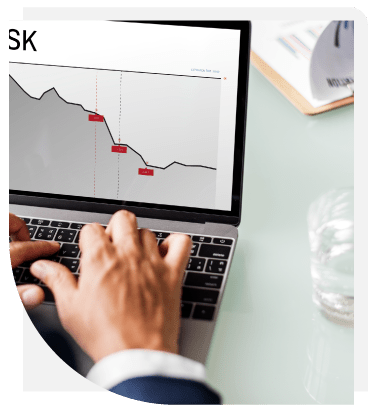Checklist for AML Compliance: Best Practices for Anti-Money Laundering Compliance
How do you track the progress as far as complying with anti-money laundering is considered? In order to make your compliance program more resilient, cost-effective, and efficient, you need to follow best practices for anti-money laundering compliance and use checklists for AML compliance extensively.
This article is going to suggest some of the best practices you can adopt in order to comply with your AML programs. So without wasting much of your time, let us begin with the same.
Best Practices For AML Compliance
Here are the best practices that you have to follow in order to comply with
the Anti-Money Laundering Laws and Regulations.
1-Anti-Money Laundering Compliance Fundamentals
- Do not try to overlook the importance of written Anti-Money Laundering Policies. AML compliance is not something you have control over in order to improvise it. You must first understand your AML policies well, then pen it down for your staff, business executives, and regulators. While making all your staff aware of the guidelines, you must ask a few questions to yourself so that you don’t have to compromise on the authenticity and efficiency of those policies.
- What type of KYC records do you have?
- What is the screening mechanism?
- Is the customer due diligence process efficient?

- What communication procedures do you adopt?
- What are your record retention policies?
-
You must have a designated individual who is responsible for the program and its efficiency. That one individual is responsible for ensuring that all the processes are followed well and are being updated on time.
In addition to that, the officer also has to look out for proper preparation of reports, adequate training and development, and lastly, that the entire system is working smoothly and without any hassles.
For the position of an AML compliance officer, you must consider someone from the senior-level management because they have both the powers and the potential to influence the qualitative as well as a quantitative measure of your business. -
Every employee of your company who deals with transactions or customers directly or indirectly needs to understand the policies and procedures of your company.
All the employees must be well aware of the techniques used by the money launderers, checks they should make, legal requirements, and how to report any kind of suspicious activity.
However, it is crucial for you to note that AML training is an ongoing process in order to keep your staff informed and vigilant to ensure that the entire program is up-to-date. -
Another vital aspect of that is reviewing. If you think everything is working pretty and there is no need to check your daily operations and efficiency, you are committing a serious mistake.
By the time you will start witnessing a problem or a hassle in the system, it will be too late. To avoid this situation, you must have an independent expert who is not directly associated with your daily operations but can monitor and review your processes on a regular basis.
2- Red Flags of Anti-Money Laundering Compliance
There will always be some signs that clearly establish that something is not
right in the system or the process. Money laundering is all about bringing
the illegalized money back into the market after legitimizing it through
several means.
Here are a few unusual activities/red flags that you must control:

- Unusual large cash transactions.
- Enhanced frequency or level of transactions in multiple accounts to divide the significant amount as per the thresholds.
- Spikes in amounts and activities.
- Transactions associated with businesses that deal with vast amounts of cash on a daily basis, for instance, through gambling.
- Transactions associated with several jurisdictions that have a history of money laundering activities.
- Transactions associated with businesses or individuals that almighty be potential money launderers.
You can experience these activities at an early stage of the Customer Due Diligence (CDD) process or via an ongoing monitoring process.
At the time of onboarding a client, normal and baseline information like the type of account, expected transactions, and sources of funds should be gathered to avoid last-minute chaos.
However, it is essential for you to note that irrespective of internal examination or external reporting to the regulators, the information mentioned above is not enough to tag the activity or the transaction as a red flag.
Read More – Red Flag Indicators For AML/CFT
Compliance. Trust. Transparancy
Customized and cost-effective AML compliance services to support your business always
3- Anti-Money Laundering Compliance Screening

One of the best ways to eliminate risk or reduce its impact is first to identify
the scope of any sort of risks in your system and take mitigative measures
at the right time.
For instance, you might want to perform a comprehensive identity verification check that has the potential to reduce the risk or scope of any fraudulent activities.
This verification check has the power to keep you safe from the threat of
dealing with illegal money, breaking the rules of compliance, and many
more.
Terrorists and money launderers are getting proficient in identifying the weak links or the loopholes in your systems which in return helps them in hiding their authentic sources of income or funds and also their relation to it.
You can block access to the individuals who want to bypass your safeguards, making your prevention systems even more secure and robust.
4- Anti-Money Laundering Compliance Monitoring
You need to keep an eye on a few activities like exceeding thresholds, change of status, suspicious activities, surveillance of employees and staff, recording of the communications, new regulations, trade data, market trends, and transaction monitoring needs of various other markets.

5- Risk Management for Anti-Money Laundering Compliance

With the rate of regulatory and technological change, determining modern-
day risk assessment is not the only motive. Instead, it is more about
creating dynamic, adaptable, and defendable procedures and policies.
In order to make your business grow, you have to mitigate the risks even
before it gets into the power of position to destroy your business.
Therefore, in order to identify the possible quantifiable risk, you must
constantly monitor all the activities and take data-driven and not guts-driven
business decisions.
Compliance. Trust. Transparancy
Customized and cost-effective AML compliance services to support your business always
6- Integrating Anti-money Laundering Compliance Technology
Here are the few technologies and their eternal use that you might want to add to your existing systems in order to enhance the efficiency of the entire process.
- Look out for already proven efficient technological options like blockchain.
- What is the utility of adding up a new state of technology?
- How quickly after integrating the latest technologies can you expect some noticeable results.

It is crucial for you to understand that automation won’t eliminate the need for manual powers and judgments, especially in investigations. But with the help of automation, you will be able to reduce regulatory risks, streamline the process, and restricts unnecessary overheads.
Read More – What Is The Role of Technology In Anti-Money Laundering Compliance
Implementation of AML Compliance Best Practices
In order to comply with your AML policies and procedures, you must seek help from all the practices mentioned above. The entire process is complex, and a single mistake has the potential to bring irreparable damage to your brand name. However, if you are looking for someone who can effectively and efficiently tick right on all the items of the Anti-money laundering checklist, then AML UAE is the name to trust.
Our recent blogs
side bar form
FAQs - Checklist for AML Compliance
Here are a few frequently asked questions about the Checklist for AML Compliance
AML/CFT audit checklist includes beneficial ownership, source of wealth, involvement in past or present frauds, incomplete documentation, unnecessary use of intermediaries, and many more.
Companies must perform AML checks of customers, suppliers, and employees. Details include full name, photo identity proof, address proof, date of birth, nature of the business relationship, the purpose behind it, employment details, source of funds, type of transaction, and relationship with the beneficial owner.
AML requirements in UAE include Know Your Customer, Customer Due Diligence, reporting suspicious transactions, risk profiling, robust governance structure, and implementation of AML policy.
AML compliance checklist includes checking KYC documents such as identity proofs, residence proofs, signature verification, company ownership details, and company registration or licensing certificate.
Share via :
Add a comment
About the Author
Pathik Shah
FCA, CAMS, CISA, CS, DISA (ICAI), FAFP (ICAI)
Pathik is a Chartered Accountant with more than 25 years of experience in compliance management, Anti-Money Laundering, tax consultancy, risk management, accounting, system audits, IT consultancy, and digital marketing.
He has extensive knowledge of local and international Anti-Money Laundering rules and regulations. He helps companies with end-to-end AML compliance services, from understanding the AML business-specific risk to implementing the robust AML Compliance framework.




